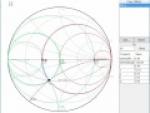These blog entries discuss RF/wireless concepts.
RF Concepts
Submitted by rfrobenius on
dBm to Milliwatts Conversion Tutorial with Python
Submitted by rfrobenius on
Transmission Line Elements on Smith Chart Web App
Submitted by rfrobenius on
Analytical Impedance Match with Python
Submitted by rfrobenius on
Impedance Match Example Video
Submitted by rfrobenius on
Smith Chart Matching HTML 5 Version
Submitted by rfrobenius on
Self-study Guide: RF Small-Signal Amplifiers (LNA)
Submitted by rfrobenius on
Evolving Satellite Market
Submitted by rfrobenius on
LC Resonance Plotter
Submitted by rfrobenius on
Switching Mixers Vlog
Submitted by rfrobenius on





